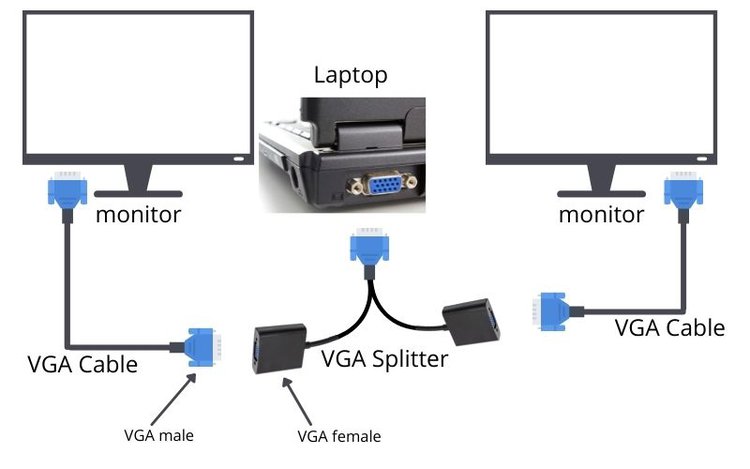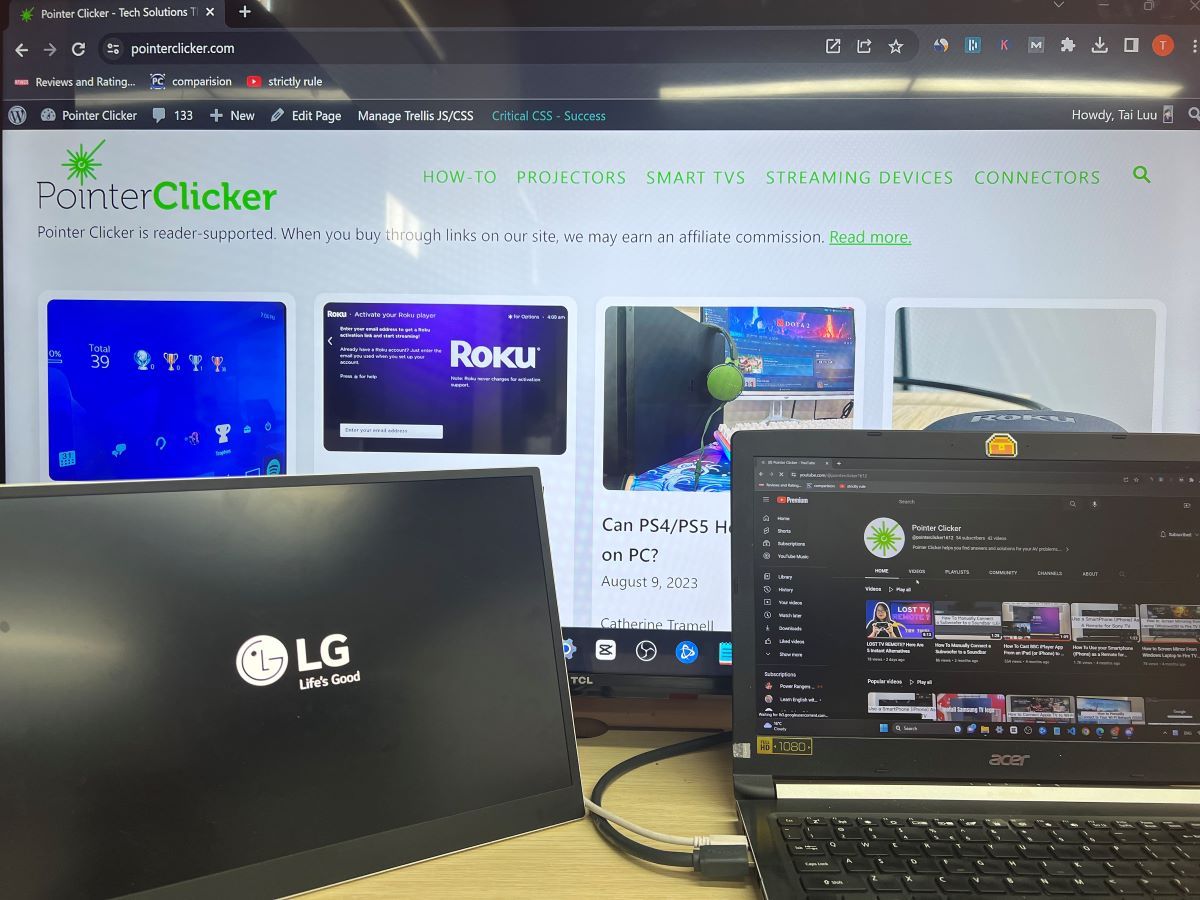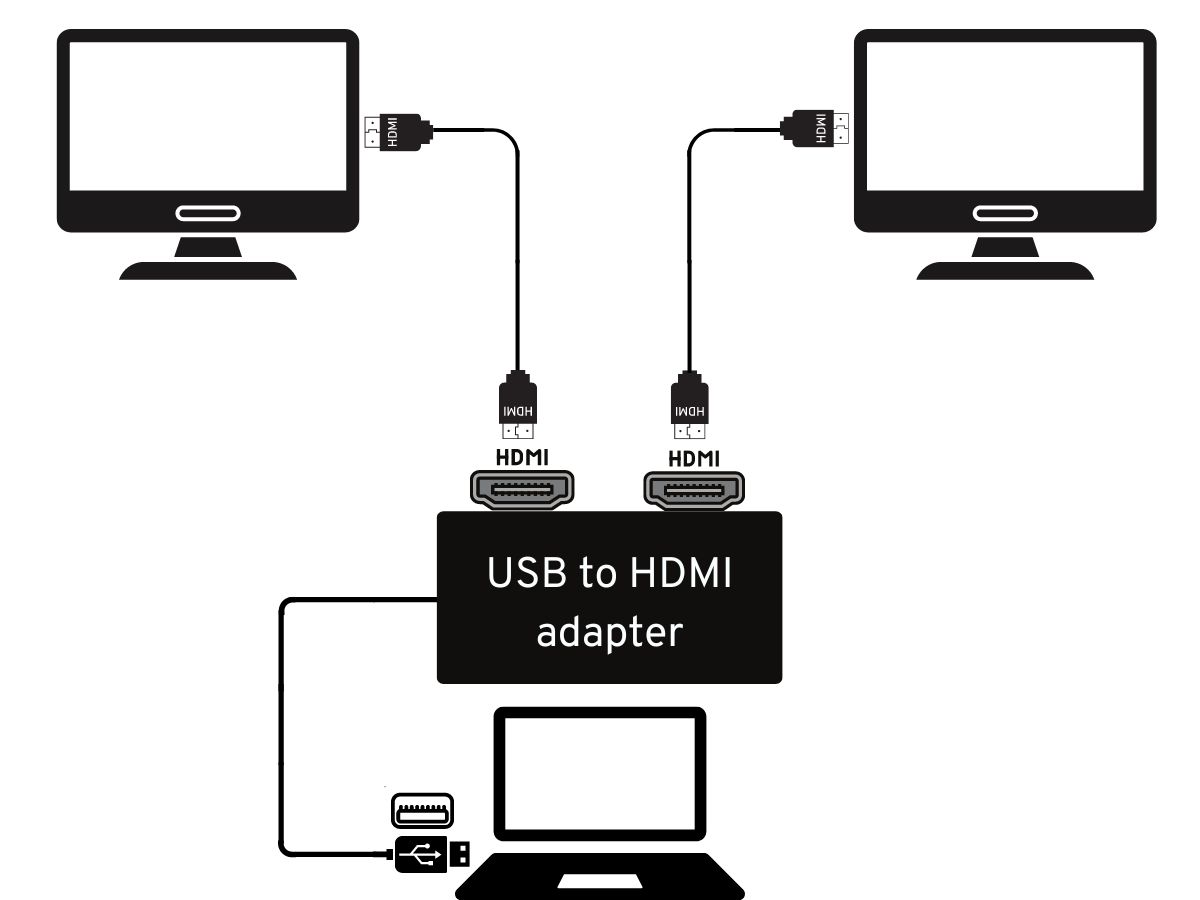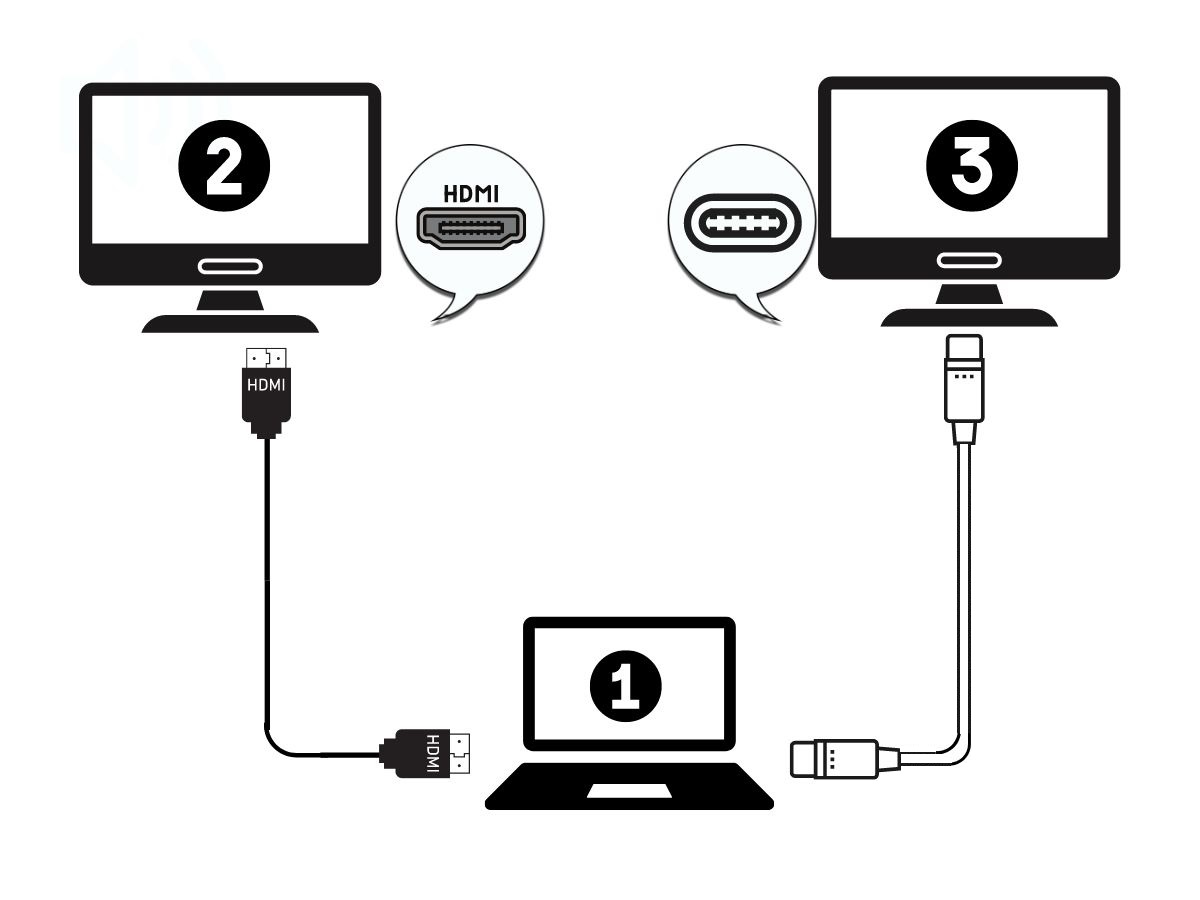Can I Use a VGA Splitter for Dual Monitors with Extended Desktop?

What To Know
- A VGA splitter can only duplicate the same display across multiple monitors, not extend it for different views on each screen.
- For extending your desktop across multiple monitors, use a USB to HDMI adapter or connect monitors using a mix of different video ports like HDMI, VGA, DVI, or DisplayPort.
- Another viable alternative for extended desktops – daisy chaining, using Thunderbolt or DisplayPort, allows for connecting multiple monitors with minimal cables and is.
Setting up dual monitors doesn’t have to be a hassle, even if you’re not a tech expert.
This guide will explore how VGA splitters work for dual monitors and offer simple, effective alternatives for a seamless display setup.
Keep reading to discover how to expand your digital workspace with ease and clarity.
Quick Navigation
How Does a VGA Splitter Work?

A VGA splitter is a handy tool that duplicates or mirrors the display from your source device, such as a laptop or computer, onto multiple monitors.
When you connect your computer to two monitors using a VGA splitter, both screens will show the exact same image.
It’s important to note that a VGA splitter cannot be used for extending your desktop across multiple monitors.
But don’t worry! In the following section, I’ll walk you through some alternative methods that allow for desktop extension.
3 Alternative Methods to Set Up Dual Monitors for Extended Desktop
Before diving into the world of dual monitors, it’s crucial to ensure your laptop or PC is up to the task of handling multiple displays.
Fortunately, our comprehensive guide here offers crystal-clear, step-by-step instructions tailored for both Windows OS and macOS users, making the verification process a breeze.
As you’re reading this article, which is about VGA splitter for dual monitors, chances are you have at least two monitors ready to go.
Therefore, the alternative methods mentioned in this section will be for those with at least two monitors in their setup. But if you only have one external monitor, these solutions can still help.
Note: these workarounds can be applied for both macOS and Windows OS PCs or laptops.
Use a USB to HDMI Adapter or Two Different Video Ports

We have already had a dedicated article on this topic, if you’re interested in other methods, visit this link for more.
If you’re curious about more ways to connect multiple monitors, we’ve got you covered! Check out our detailed article here.
In a nutshell, the article explores how to:
- Use a USB to HDMI adapter for hooking up two HDMI-ready monitors at the same time. This handy adapter transforms a USB port into an HDMI outlet.

- Connect your monitors using different ports if your computer has an HDMI and another type of video port (like VGA, DVI, or DisplayPort). Link each monitor using the respective cables.

Even though the article mainly talks about HDMI ports, you’re not limited to them. With the adapter we recommend, you get to pick from a broader selection of ports.
Check out this versatile adapter on Amazon:
- Docking Station 3 Monitors: USB C to dual HDMI Adapter 4K (1*60HZ & 1* 30HZ), 1*4K@60HZ DP, 1*1080P...
- USB C Port Fast 100W PD Charging: Laptop docking station dual monitor adapter features a powerful...
- Docking Station 4K Display Adapter: The usb c hdmi hub for multiple monitors adapter with Dual HDMI...
Last update on 2024-07-05 / Paid Link.
The adapter isn’t just for HDMI – it also supports a variety of AV standards including VGA, DisplayPort, and Thunderbolt. This means more options for you to get the best setup for your monitors.
Use Daisy Chain
Did you know you can link multiple monitors together using just a few cables? This is called daisy chaining, and it’s a neat trick to expand your screen space without clutter.
However, your monitors and laptop need to meet some requirements:
- Thunderbolt 3 (or newer)
- DisplayPort 1.2 (or newer)
- Monitors must have at least two Thunderbolt ports or a mix of one Thunderbolt and one DisplayPort
- Your laptop must have a DisplayPort, a USB-C port with DisplayPort Alt Mode, or a Thunderbolt port.
Here is how to daisy chain using Thunderbolt ports.
Step 1: Power on all the devices in the setup.
Step 2: Plug the Thunderbolt (USB-C) cable into the Thunderbolt ports of your laptop and the first monitor.
Step 3: Plug the other Thunderbolt cable into the Thunderbolt ports of your two monitors.
To daisy chain via DisplayPort, follow the instructions below.
Step 1: Power on all the devices in the setup, and activate the DisplayPort 1.2 or MST feature on your monitors.
Step 2: Plug the Thunderbolt (USB-C) cable into the Thunderbolt ports of your laptop and the first monitor.
Or plug the DisplayPort cable into your laptop’s DisplayPort Out and the first monitor’s DisplayPort In.
Step 3: Plug the DisplayPort cable into your first monitor’s DisplayPort Out and the second monitor’s DisplayPort In.
Duy Anh is a seasoned technical editor specializing in helping readers troubleshoot TV, projector, and Wi-Fi issues. He’s always been drawn to logical problem-solving. His ability to approach matters from various angles with a neutral mindset enhances his technical expertise.


